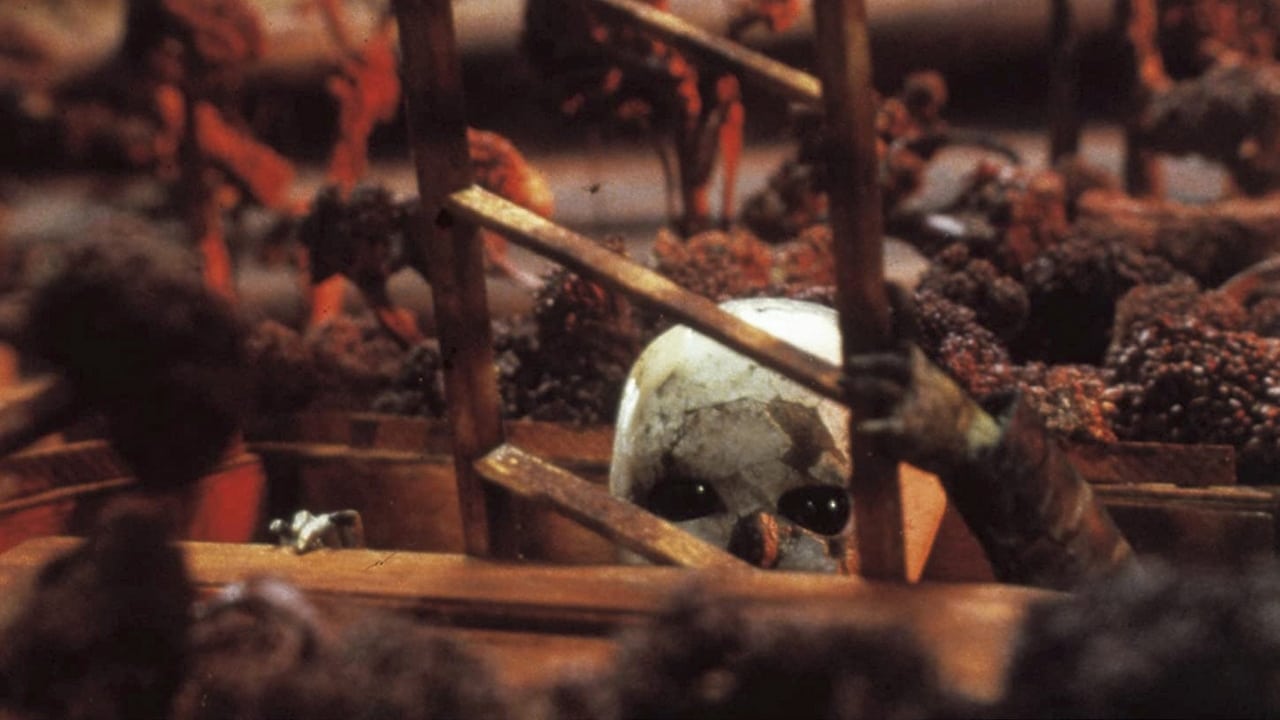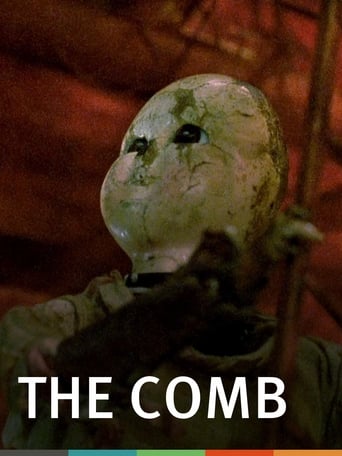

Purely Joyful Movie!
... View MoreGood concept, poorly executed.
... View MoreThis film is so real. It treats its characters with so much care and sensitivity.
... View More.Like the great film, it's made with a great deal of visible affection both in front of and behind the camera.
... View MoreOh my lord,the Quay Brothers were so great! True artists, they created their own very unique little medium, and I for one think that is really cool. Okay, this one's a little than your average Quay short, and I personally think that didn't work out so good with the "Street of Crocodiles", but I really love this, even though unlike a lot of the others by the Brothers that I've seen, which are practically impossible to figure out and are great that way as they're not meant to be, and you're just supposed take all the deep moods and Gothic imagery and make of it what you will, "The Comb" here has factors that make it a lot easier to grasp, although you do still get oh so wonderfully swept away in the decrepit weirdness. It sort of gives the game away right at the beginning with the phrase:"From the Museums of *Sleep*". And it's the only one I've seen to feature a real live-action human being, but even she's kinda hazy. She was like a sort of focal point. As much as I love the masterful surrealism of these films, it was a welcome change to have an anchor of sorts to pin down the overall picture and render things a little more tangible. The little chipped china-doll from "Dramolet" returns, and the flying disembodied robot hands from "Tales From Vienna Woods". There's two of them now, and it turns out they belong to the doll. What a superior haunting vision, it's all so endlessly strange, idiosyncratic and utterly hypnotic that it's pretty hard not to also find it greatly charming. They're always that way. Everything, the light the walls the floors, the muted background voices at the edge of awareness, like whispers or the rustle of pages being turned-all of it wrong, yet so immensely appealing and right! All conventional views are twisted and askew, constantly on the edge of hysteria, everything is so dreamlike and unreal-no, not dreamlike, that's not the right word in this instance. It's nightmarish, but I strongly disagree that any of these films are ever about the fear. To its credit though, Comb is eerily animated, to the point where I felt a little unnerved. It has a strong sense of foreboding about it. ::: The helter-skelter quest of the ragged puppet seems to be a window into the darker recesses of the woman's mind. And from the look of things, this woman is not well at all... Was the doll a metaphor for her innocence? Her inner-turmoil, forever climbing up and down ladders leading to nowhere that I'm guessing were representations of the layers of her consciousness, trying to reach heaven knows what but never quite getting there because at the critical point the woman tumbles out of bed and awakens from long fitful slumber. The way the doll mirrors her actions suggests that everything seen was her warped "dream". I love the poignant serenity of the final scene where the ghostly woman brushes her hair with pallid and sickly-looking beautiful hands in some lightless place in the world... Her knowing and enigmatic little smile is most intriguing. And then, just as with all Quay short films after it's over I don't know quite how to feel about all I've just seen, but I'm very satisfied and glad that I watched it.
... View MoreTo even contemplate The Comb is letting go of what's expected. The Comb's a relentless stream of visual images to be consumed, to leave spectators bewildered by a darkly mysterious world.Causing this bewilderment is the non – existence of a structured narrative. All that's clear is a sleeping woman experiencing a dream of nightmarish proportions. Spectators are mercilessly placed into her dream, a world of moody colours, expressionist designs and murmured voices psychologically stunning spectators into a disturbed consciousness. Though this disturbance emphasises the ambiguity surrounding The Comb.The ambiguity offsets any chance of clarity for spectators, the flood of surreal images filtered through various degrees of motion, camera movements in all directions and striking instrumentals continuously shifting spectators from clear perception. Yet this drives The Comb, making its narrative (if that's relevant to use here) an otherworldly experience which spectators must strip themselves mentally from their constructed expectations, to be open and active towards the surreal is to achieve at least comprehend The Comb. Only if you're truly willing to be open will The Comb be of any value.
... View MoreIn the Brothers' Quay own words, taking everything as a Freudian symbol is a little too easy and kind of turns 90% of cinema into one single picture. However, this movie is so, well, Freudian. From the undertitle ("from the Museums of Sleep") to the in uteral mise-en-scene, this is a cinepoem of free association.A lot of Quay brothers features have that feeling, but most of them are set in dusty corners, seemingly within the space of cracks in the walls and dustbunnies, what happens underneath your bed when you're not around to observe it. The use of color in this film, however, gives it a strong internal-space feeling, or to be more precise, the Quay brothers literally take us into a woman's body and send hands feeling all over her.Essayists of haptic criticism state that a strong way to create a sense of touch from glance in film is to play with focus, and the Quays' do that a lot in most of their films. Saturating that dim slight-focus with flesh-tone sunsets makes it seem even more organic. I disagree that this area looks like something out of a Grimms fairytale... the Grimms like blood and forests, not organics and menstruation.--PolarisDiB
... View MoreExplaining an avant-garde film such as The Comb is like trying to explain the concept of colors to a person who has been blind since birth. The blind may conjure up their own ideas of what colors look like, but they cannot fully realize them. Such is the way of the avant-garde cinema. It simply cannot be explained through mere words due to its abstractness. In order to fully realize it, you must experience it. Viewing The Comb is like entering a nightmare netherworld unimaginable even in your darkest dreams. Much like a dream, it is difficult to explain in mere words. Like all avant-garde films, The Comb must be experienced first-hand to be fully realized. This film is set in a disturbing little world full of moth-eaten 19th century dolls, crooked passageways, rotted wood and trees and mazes of ladders leading to an other-worldly crimson sky. Surrealism is prominent throughout; it seems as if The Comb is a Salvador Dali painting animated to life. The dream scape presented in The Comb has few resemblances to the real world, as everything is given a nightmarish tilt. As in their other films, The Quays once again animate the inanimate and bring lifeless objects to creaky, jerky life. The main character, if I may call it that, is a dirty, cracked porcelain doll who is intent on climbing a tower clustered by mazes of ladders and small passageways that all lead toward a blood-red sky. Periodically Intercut between the doll's difficult journey upwards is a woman tossing and turning in her bed, which is set in a grainy, Victorian-era room loaded with worn antiques. The brief scenes of this woman (circa 4 of the 18 minutes the film lasts) are live-action (a real human, no animation) and in B&W while the rest of the film occurs in the lushly colored netherworld made living through stop-motion animation. The woman appears to be having a nightmare which may be linked to the world the doll is struggling in. The actions of the woman echo into the doll's dream world and vice versa. At the end of the film, the relation between the doll and the sleeping woman is brought into perspective. The Comb is very surreal and avant-garde, meaning it breaks from conventional film making practices. There is no dialogue, no narrative story, no named characters; just pure abstract avant-gardism. The nameless characters seem to be symbols, and their antics tell a story that is open to anyone's interpretation. I think The Comb expresses the relationship between Man and his Dreams. What we do in the 'real' world (displayed by the woman in bed) reverberates in our dreams (the doll's journey). I believe the woman in bed is dreaming everything that happens in the film. There is no score, except for disjointed stabbing violins, scratches and indecipherable moaning, which adds to the already disturbing visuals. Like most avant-garde films, this will tap into your subconscious and have a strange, personal effect on you. Whenever I watch The Comb, I feel as if my life is put on hold for 18 minutes as I'm pulled into this enigmatic, surreal world. I have seen most of the Brothers Quay films and feel this is their second best, under their masterpiece The Street of Crocodiles. The Comb is highly recommended for fans of stop-motion animation, avant-gardism or just something different.
... View More